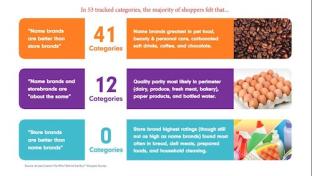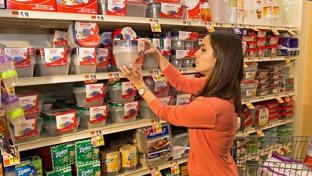Meat Prices Up, Dairy Down at Grocery: Acosta
According to a new report from sales and marketing company Acosta, the meat, seafood, pet care, deli, baby care and household care departments are seeing the highest price increases, while dairy, alcohol, health and beauty, grocery, bakery and produce are experiencing below-average rises in price.
According to “The Pricing Conundrum,” grocery prices have steadily risen for the past five years, along with a recent surge in manufacturing and transportation costs. At the same time, both manufacturers and retailers feel pressure to offer the lowest possible prices in a highly competitive landscape where shoppers are spoiled for choice. The combination of these two factors have pushed manufacturers and retailers to work together to ameliorate the negative effect of price hikes.
The report also offers best practices for effective collaboration between manufacturers and retailers in this climate of rising grocery prices.
“At times, manufacturers are able to absorb, delay or minimize cost increases, but eventually it becomes necessary to negotiate price increases with retailers,” noted John Clevenger, SVP/managing director, strategic advisors at Jacksonville, Fla.-based Acosta. “Seventy-six percent of retailers have pushed back on or have been hesitant to accept price increases. However, we have found that increases are not necessarily a negative, as long as they are executed fairly and equitably across all channels of retail with full transparency.”
Among the report’s findings:
- While no supermarket department has been immune to rising prices, the degree of the increase has varied.
- Many shoppers and retailers prefer a price increase to a reduction in package size.
- 50 percent of shoppers polled noticed size reductions.
- 80 percent of shoppers accept that food prices may climb when external cost factors rise.
- Almost half of manufacturers surveyed implemented a price increase in 2018, on average of 7.8 percent; this trend is expected to continue for the next one to two years.
- Retailers are adopting new practices, including adding economists to staff, aligning with private-brand costs, and protecting/compensating until their largest competitors move retail prices.
As for manufacturers’ best practices, Acosta recommends:
- Understand price elasticity and be able to simulate the price increase. Identify the right level of price increase to avoid loss of market share or significant sales velocity.
- Offer specifics on what’s causing the increase, evidence that the increase is applied across the market/competitors and a plan to offset a price increase in the short term.
- 90 to 100 days of lead time is optimal: Ensure that timing doesn’t clash with marketing programs in place for key promotions or seasonal periods.
- Reaffirm with the retailer that you’re investing in the right ways to drive traffic to your brand, and in turn, the retailer.
The report was compiled from industry data and proprietary information sources, among them online surveys of Acosta’s proprietary shopper community.






